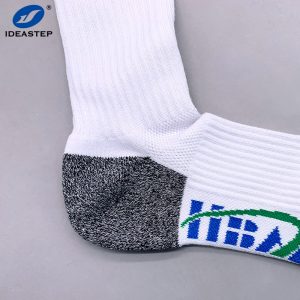Now that we have a more in-depth understanding of diabetic foot, we must strategically despise and pay attention to this stubborn disease. In the final analysis, prevention is the most important. The 5P principle recommended by the ADA in the United States: Podiatric Care (regular follow-up and inspection by medical specialists) Protective Shoes (comfortable shoes with protective function, with specific and sufficient depth) Pressure Reduction (insoles with pressure relief, and even customized insoles) ) Prophylactic Surgery (preventive orthopedic surgery) Preventive Education (preventive education for patients and medical staff), we can learn from the experience:
Strictly control blood sugar: Diabetic foot is a complication that occurs when diabetes develops to the middle and late stages. Therefore, active treatment of diabetes and good blood sugar control are all fundamental. Improve compliance, take oral hypoglycemic drugs, or inject insulin as prescribed by your doctor! !!

Daily diabetic foot care
• Persist in and use the correct method to wash your feet
1. Don’t soak your feet too much, just 5 minutes
2. Use neutral soap to wash your feet daily
3. Measure the water temperature by hand or thermometer, 40℃ is good
4. Use a light-colored soft dry towel to dry the water between the toes, do not rub hard, and check for bleeding and seepage
5. Keep the toes dry, if the toes are white due to moisture, wipe them with alcohol swabs
6. It is not advisable to use talcum powder to absorb water if you sweat a lot to prevent clogged pores and infection

• For dry feet, apply skincare products to prevent dry skin: use skincare creams or creams, and massage your feet properly. Be careful not to apply care cream between your toes or ulcers. Severely cracked heels, you can use a special cracked cream containing urea
• If it feels unreliable, be sure to check your feet every day: focus on the soles, between the toes, and the deformed parts of the feet. If you can’t see clearly, use a mirror or ask someone for help. If the skin of the feet appears dry, cracked, red, swollen, blisters, ulcers or erosions, deformed toenails, or lack of sensation in the feet, you must go to the hospital in time.
• Carefully trim the toenails: trim the toenails flat, do not cut bleeding, avoid cutting too deep on the sides; cut off the sharp parts; do not let the toenails grow too long; do not go to the public bathroom for a pedicure. Some patients have very thick toenails, you can ask professionals to use special nail scissors to flatten the nails.
1. If you have conditions, you can wear special treatment shoes. The shoes are made of special elastic materials, soft and thick soles, and special insoles, which can disperse the pressure on the soles of the feet. If you can’t buy treatment shoes, soft leather shoes and sports shoes are the most ideal.
2. The shoe type should be a square toe, do not wear high heels, hard leather shoes, sandals with exposed toes, plastic or cloth shoes.
For new shoes, after wearing them for 20-30 minutes, you should take them off to check whether there are reddened areas or friction marks on your feet. Starting from wearing it for 1-2 hours a day, gradually increase the wearing time to ensure that potential problems are discovered in time.
3. Before putting on shoes, check whether there are rough seams or foreign objects in the shoes.
4. Wear warm shoes when you go out for exercise. If your shoes get wet by snow, they should be replaced in time.
• Choice of socks

1. Choose socks made of natural materials, such as cotton thread, wool, etc., which are both absorbent and breathable
2. The socks should not be too small or too big, without holes or patches
3. The upper mouth of the socks should not be too tight, otherwise, it will affect the blood circulation of the feet
4. The inner seams of the socks should not be too rough, otherwise, it will cause damage to the feet
5. Do it every day
• Treatment of small diabetic foot wounds: wash the wound with water or saline, gently wipe dry, cover with medical dressing, and change the dressing every day. Note that if the wound shows no signs of improvement within 24-48 hours, or if there are signs of redness, heat, swelling, etc., even if you do not feel any pain, you should immediately go to the hospital to see a doctor for treatment.
• Several “don’ts”: Don’t trim the “calluses” casually; don’t use corn cream to treat corns and calluses by yourself; don’t smoke; don’t get too close to the heat source; don’t take a sauna, don’t use a warm-type family physiotherapy device; don’t grow long Time to lift your legs, so as not to obstruct the blood circulation of the lower limbs.
Starting from the little things in daily life, controlling blood sugar and taking care of your feet are the foundation for preventing diabetic foot!
